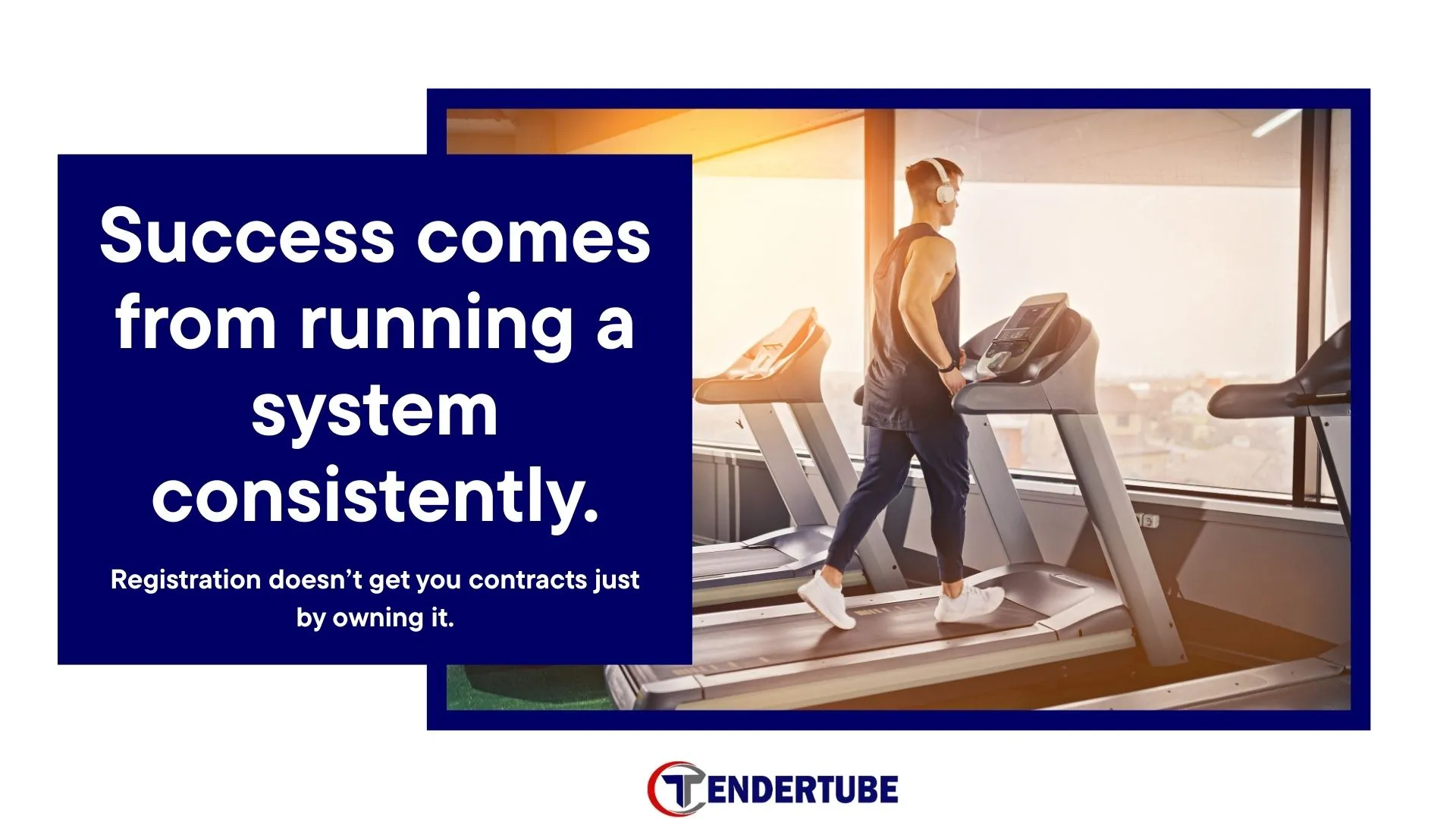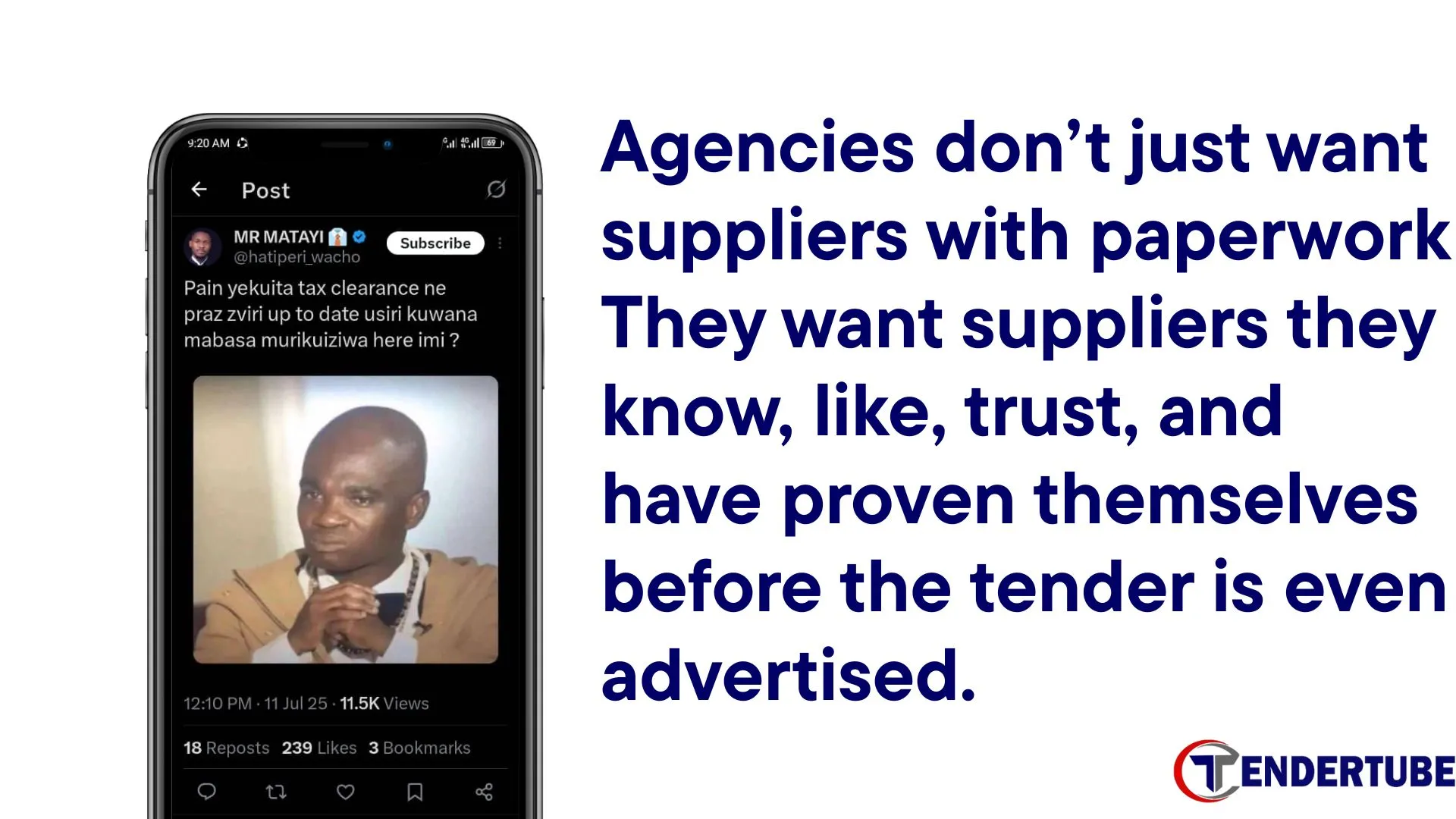5 Reasons Why Your Supplier Registration Isn’t Working For You
Finding Tender OpportunitiesClara Chimedza | Nov 04, 2025 | | | |
So you went through the whole supplier registration process. You filled in the forms, paid the fees, uploaded the documents, and finally got your PRAZ certificate. You probably felt a sense of relief “At last, I’m in the system. Now the contracts will start coming.”
And then… nothing. No calls. No emails. No contracts. Just silence.
In this post, I’m going to walk you through five reasons why you are not getting contracts from your supplier registration.These aren’t complicated tricks or consultant-only secrets. They’re practical shifts you can make right now to finally start seeing results from your registration.
So let’s dig in.
Table of Contents
- You Treat Registration as the Final Step, Not the First
- You Have Unrealistic Expectations
- You Never Check the Portal
- You’re Waiting for Buyers to Call You
- You Aren’t Building Relationships with Government Agencies
1. You Treat Registration as the Final Step, Not the First
Most people treat supplier registration like it’s the finish line. They get the certificate, put it in a folder, and then sit back waiting for contracts to roll in.
But here’s the reality — registration is not the end, it’s only the beginning.
Think of it like this: registration is just like buying a stand. Now, buying a stand is exciting. It feels like an accomplishment. But let’s be honest. Buying the stand is not the end goal. The goal is building your dream house.
And to build that dream house, you’ve got to put in the work — brick by brick, level by level.
Supplier registration works the same way.
Getting that certificate is like securing the land. It gives you permission to build, but it’s not the house itself. The house , in this case, winning tenders comes from what you do after registration: tracking opportunities, submitting bids, following up, and building relationships.
So don’t stop at the certificate. Roll up your sleeves, and start building your “house” in the government market, one step at a time.

2. You Have Unrealistic Expectations
Here’s another trap I see all the time. If you register today thinking you’ll start winning the following week then disappointment is waiting for you.
The thing is registration doesn’t mean instant tenders. Registration is just one part of a long-term positioning strategy.
Here is another perspective. The industry standard is that it usually takes 18 to 24 months before a supplier wins their first government contract. That’s the general guideline. Now, sometimes it can happen fastersay 12 to 18 months.but that only comes with consistent effort, proper groundwork, and a commitment to keep showing up.
Think of it like farming. When you plant a seed, it doesn’t mean you’ll harvest tomorrow. Your yield depends on many factors: the quality of the soil, how much you water it, the weather, and the care you put in. Supplier registration is the same. It’s planting the seed. The harvest comes later, after patience, effort, and persistence.
So, don’t be discouraged if nothing happens right away. Stay in the game. Keep planting, keep watering, keep working — and the results will come.
3. You Never Check the Portal
Registration without follow-up is wasted effort.
For some portals, like the PRAZ eGP system, opportunities aren’t automatically emailed to you. They’re posted inside the portal. That means if you don’t log in regularly, you’ll miss them completely.
Now here’s where many suppliers make mistakes. I’ve met people who don’t even know their own login details. Some don’t know their password. For others, the day they registered was the last day they logged in.
And you know how they treat it? Like a badge — a “nice to have.” Something to mention in passing: “Oh yes, we’re registered with PRAZ.” But here’s the problem: a certificate on its own doesn’t generate opportunities. The opportunities are inside the portal, waiting for you to check, research, apply, and compete.
So let me say it plainly: registration is only useful if you actively engage with the system. Make it a routine. Log in. Check new notices. Track opportunities. Research.
Don’t let your effort stop at the registration stage. Otherwise, you’re just sitting on a key without ever opening the door.

4. You’re Waiting for Buyers to Call You
Another thing you need to know is that registration is a passive tool. It doesn’t chase buyers for you. It doesn’t market your services. It doesn’t make you stand out. All it does is put your name on a long list.
Let’s look at this example. If you look at the latest Government Gazette, under the category for construction and civil works , there are 957 registered suppliers.
Out of 957 suppliers, who exactly do you think the buyer is going to call? That’s right — no one.
The thing is buyers have hundreds of suppliers to choose from. If you don’t actively market yourself, you’ll stay invisible. Registration isn’t a marketing service; it’s an entry point.
Government buyers expect you to be the one raising your hand, building relationships and showing your value. The ones who win are the ones who stay active, visible, and engaged.
So remember this: registration puts you in the directory. It’s still your job to knock on the door.
5. You Aren’t Building Relationships with Government Agencies
Supplier registration opens doors, but relationships keep them open.
Yes, registration gets your name on the list. But being on the list is not enough. You need to go further — you need to build familiarity and trust so that government agencies see you as a serious, reliable supplier.
When I was working for the national broadcaster a few years back, there was a company from Germany that sold broadcasting equipment. Now, instead of just waiting to be noticed, they did their homework. They found out we were struggling with outside broadcasting and live streaming.
So what did they do? They flew into the country and handed us their equipment. And not as a sale. They said, “Here, try this out for six months. No strings attached. If it works for you, great. If not, just send it back.”
Now, what were they really doing? Marketing. Building relationships.
And guess what happened? We tried the equipment, and we liked it. More importantly, we began to trust them. So when the time came to go to tender, tell me — who do you think was the first company we invited to bid? Of course, it was them.
That’s the power of building relationships. Agencies don’t just want suppliers with paperwork — they want suppliers they know, like, trust, and have proven themselves before the tender is even advertised.
So find ways to show up in front of government clients. Share your expertise. Show your reliability. Because at the end of the day, relationships turn opportunities into contracts.

Wrap Up
Supplier registration is important, but it is not enough on its own. It’s just the doorway. What you do after you step through that doorway is what really matters.
Too many people stop at the certificate, expecting magic. But you now know better. You’ve seen the five reasons supplier registration doesn’t work for most businesses:
So don’t stop at the paperwork. Log in. Check the opportunities. Submit bids. Build trust. Show up consistently. That’s how registration starts working for you instead of just sitting on your shelf as a certificate.
Remember, the ones who win aren’t the ones who registered. They’re the ones who stayed in the game long enough to be seen, trusted, and chosen.
FAQs
What should I do after registering as a supplier?
How long does it take to win a government tender your first government tender?
On average, it can take 18 to 24 months before a supplier wins their first contract. With consistent effort and proper groundwork, some win in as little as 12–18 months..
Why am I not getting tenders after registering?
Because registration is just the first step. If you don’t log into the portal, track opportunities, and actively apply, nothing will happen. Registration doesn’t mean buyers will call you.
Share This Post
Related Blogs

Blog Comments [ ]








